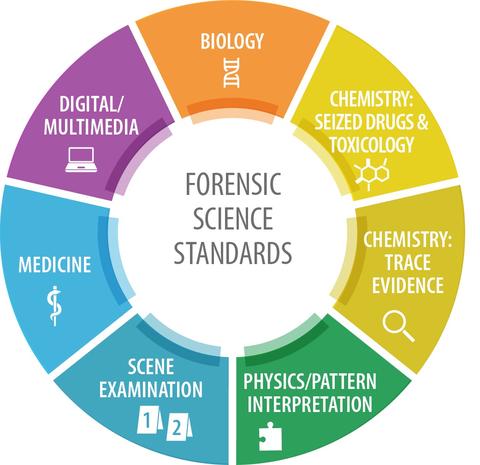
The need for forensic science standards
The forensic science disciplines exhibit wide variability regarding techniques, methodologies, research, training, and other processes. In February 2009, the National Research Council published Strengthening Forensic Science in the United States: A Path Forward. This report assessed the state of forensic science and made recommendations for strengthening the field. One of these recommendations was for the development and widespread adoption of uniform and enforceable standards and best practices in forensic science.
Documentary standards, written requirements typically developed through a voluntary consensus-based process, provide a foundation for consistency between forensic science processes related to testing, accreditation, management systems, and personnel certification. Adherence to standards reduces bias, improves consistency, and enhances the validity and reliability of results.
What is our role?
NIST is accelerating the development and adoption of high quality, technically sound forensic science standards by administering the Organization of Scientific Area Committees (OSAC) for Forensic Science. OSAC approved standards contain minimum requirements, best practices, standard protocols, definitions, or other information to help ensure that results of forensic analysis are valid, reliable, and reproducible.
OSAC Registry of StandardsThe OSAC Registry is a repository of high-quality, technically sound published and proposed standards for forensic science. These written documents define minimum requirements, best practices, standard protocols and other guidance to help ensure that the results of forensic analysis are valid, reliable and reproducible. |
News and Updates
Contacts
Forensic Science Standards Program Manager
-
(301) 975-2782





